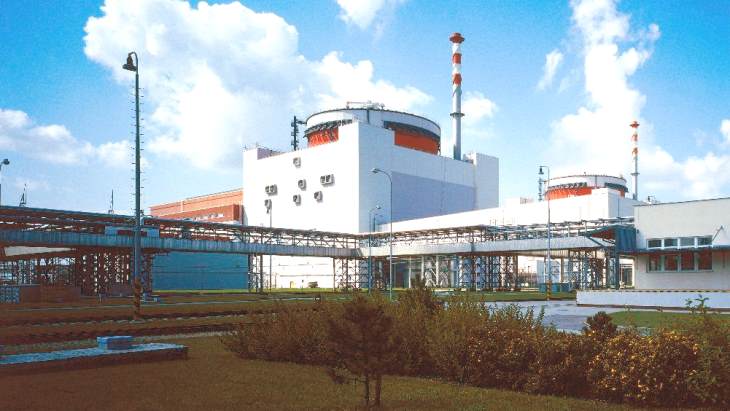Operator ČEZ says that the transition from a 12-month to an 18-month fuel cycle has begun at Temelín's second unit, part of the company's investment programme to boost efficiency and pave the way for the planned 60-year operation of the plant.

Temelín has two VVER-1000 units (Image: ČEZ)
During the second unit at Temelín's current shutdown, ČEZ says that 163 fuel assemblies are being placed in the reactor, including 48 fresh fuel assemblies, six more than before.
The extension of the fuel cycle to 18 months will ultimately increase the efficiency of the plant, allowing it to operate for longer between shutdowns.
Bohdan Zronek, director of ČEZ's nuclear energy division, said: "We are extending the fuel cycles to 16 and 18 months respectively in Dukovany and Temelín. For us, it means a reduction in lifetime consumption and a contribution to production at the level of almost 2 terawatt hours per year on average. The condition is, of course, very careful verification of all safety parameters."
Two VVER-1000 units are in operation at Temelín, which came into operation in 2000 and 2002. ČEZ announced in February it was investing CZK3.6 billion (USD157 million) this year in the modernisation of the Temelín plant to prepare it for at least 60 years of operation.
Key projects include extending the fuel campaign, modernising control systems and preparing for a generator replacement. In total, ČEZ said it planned 271 investment events for the Temelín plant this year - 46 more than last year.
The Czech Republic already uses nuclear power for 34% of its electricity, generating this from four reactors at Dukovany and two at Temelín. ČEZ is currently awaiting final bids from Westinghouse, EDF and Korea Hydro & Nuclear Power for the construction of a new reactor at Dukovany. Near Temelín, an area has been designated the South Bohemia Nuclear Park and earmarked for small reactors to operate in the early 2030s. The company said last month that, with the planned new build, it expected to almost double its nuclear workforce in the coming years.
Researched and written by World Nuclear News